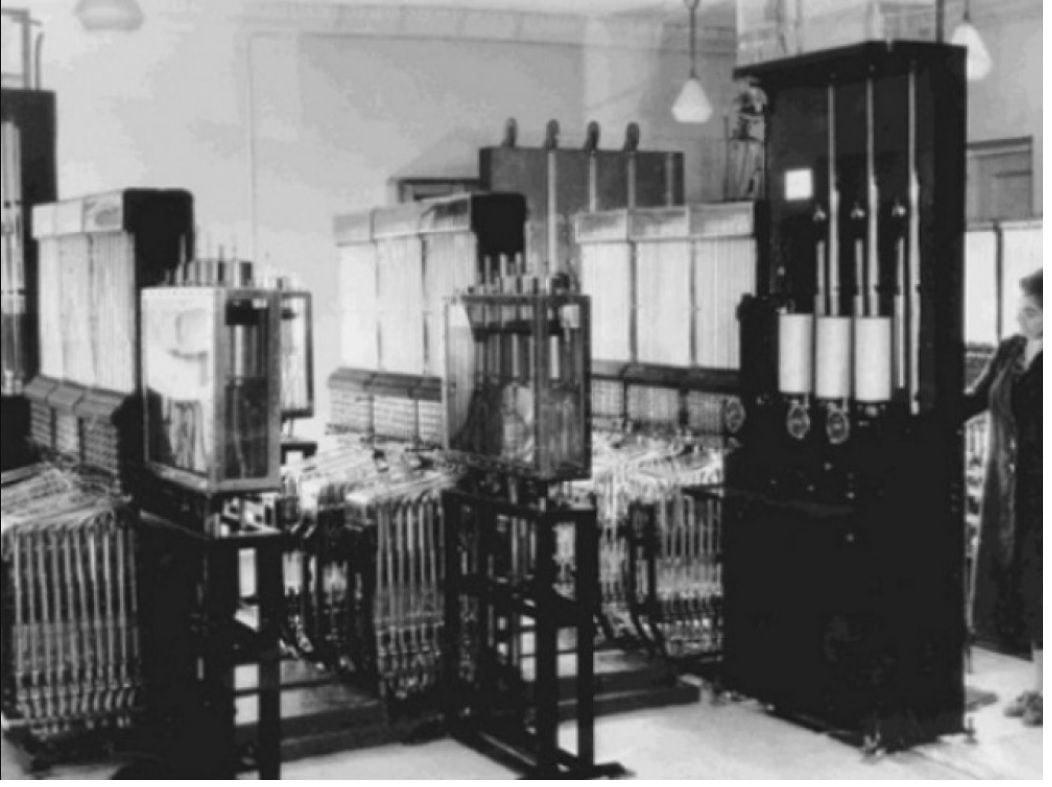
At the beginning of the 20th century, when the transistor had not yet been invented, computers were analogue and made up of large mechanical gears. They were nothing like the electronic equipment that was developed later and less like the ones we have today.
They were huge, complex and heavy equipment with limited functions, especially related to performing mathematical calculations. There is an important name in relation to those first steps of computer science: Vladimir Lukyanov.
The engineer created in 1936 a hydraulic integrator, which was later popularly described as “the water computer”. In short, he sought to replace mechanical gears with water.
The technology behind this invention
His was one of the first analog computers built in the Soviet Union. It worked by careful handling of water through a room full of interconnected pipes and pumps. The water level in various chambers represented stored numbers, and the flow rate between them represented mathematical operations. In this way, the system solved differential equations.
The water tanks were linked to tubes of variable hydraulic resistance. When they went up or down, the flow of the liquid varied and the result was displayed on a graph that was printed on paper.
It should be borne in mind that in order to use this device it was necessary to make previous calculations that served to configure the tubes that performed the calculations.
As you can see, everything was not so automatic although it was still a great help and much faster than doing all the calculations manually.

“What Vladimir Lukyanov created were hydraulic integrators whose purpose was to calculate concrete hardness, and other construction-related calculations,” Carlos Chiodini, co-founder of the Computer Museum in Argentina, explains in dialogue with Infobae.
In addition, he recalls that Lukyanov worked in the construction of railways and one of his jobs was to generate reliable and resistant concrete structures. To avoid the formation of cracks in these materials, he had to consider different variables such as the type and quantity of product used, temperatures, etc. He created the machine with the aim of automating this type of calculation.
“A water integrator was used in the design of canals and other engineering works until the 1970s. In the Soviet Union it was extended even until the 1980s, for large-scale constructions either in metallurgy, construction of dams, mines, etc. But then these equipment was replaced by electronic devices,” Chiodini emphasizes.
Nowadays, this technology remained a historical and curious fact. Currently, two hydraulic integrators are kept in the Moscow Polytechnic Museum in Russia.
The kick for the development of another type of computing, electronics, came from the hand of the transistor with advances that surprise to date.
It should be recalled that in 2015, engineers from Stanford University, led by Manu Prakash, surprised with the announcement of a computer that used drops of water, instead of bits of information.
The droplets move along a circuit made up of iron rods, with layers of oil in between which water droplets containing small magnetic nanoparticles are injected.
Nanoparticles work with the magnetic fields of a watch that moves in synchrony with water droplets. The presence and absence of each drop represent the ones and zeros of the code that conventional electronic computers have.
KEEP READING:
Últimas Noticias
Debanhi Escobar: they secured the motel where she was found lifeless in a cistern
Members of the Specialized Prosecutor's Office in Nuevo León secured the Nueva Castilla Motel as part of the investigations into the case

The oldest person in the world died at the age of 119
Kane Tanaka lived in Japan. She was born six months earlier than George Orwell, the same year that the Wright brothers first flew, and Marie Curie became the first woman to win a Nobel Prize

Macabre find in CDMX: they left a body bagged and tied in a taxi
The body was left in the back seats of the car. It was covered with black bags and tied with industrial tape
The eagles of America will face Manchester City in a duel of legends. Here are the details
The top Mexican football champion will play a match with Pep Guardiola's squad in the Lone Star Cup

Why is it good to bring dogs out to know the world when they are puppies
A so-called protection against the spread of diseases threatens the integral development of dogs




